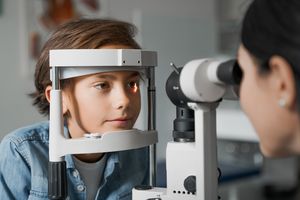CNN Travel recently published a heartwarming story about a unique world tour by Canadian couple Edith Lemay and Sebastian Pelletier and their four children. The couple wishes to give incredible moments that would enrich “visual memories” of their children before it is too late. Three of their children—Mia, Colin and Laurent—are affected by a rare genetic condition named retinitis pigmentosa—which causes blindness over time. It is a condition that does not have a cure so far, and Lemay and Pelletier’s aim is to help their children have better coping mechanisms that would prepare them for their future.
What is retinitis pigmentosa?
Retinitis pigmentosa is a condition where the cells in the retina break down slowly over time. The condition would result in vision loss. RP is caused by mutations in certain genes that control the cells that form the retina. These mutated genes are passed down from parents to children.
Symptoms of RP would typically appear in childhood itself. Loss of night vision is the most common early symptom. Children with RP may have issues adjusting to dim light and walking in darkness. The condition would cause loss of peripheral vision, too. Over time, a person with RP will have trouble seeing things out of the corners of the eyes. Eventually, they would lose this tunnel vision, too. Some others may experience loss of central vision, which would hamper their ability to do tasks such as reading or threading a needle.
RP-affected people will exhibit sensitivity to bright light and may also experience loss of colour vision. The type and speed of vision loss associated with RP would vary from person to person. Global estimates say that RP affects about one in 3,000 to one in 4,000 people. In India, the prevalence of RP is high. A study published in 2012 found that the prevalence of retinitis pigmentosa was about 1:1750 in the adult population of rural central India.
How is RP detected?
The most common method for the detection of RP is a comprehensive dilated eye exam. Here the doctor would give the patient some eye drops to widen his pupil and examine for RP. Electroretinography, optical coherence tomography and fundus autofluorescence imaging are other tests that used to detect RP.
Can RP be treated?
There is no cure for most types of RP so far. But low vision aids and rehabilitation programmes may help those with RP to manage their lives. Those with RP are advised to use sunglasses and other means to avoid exposure to too much light. Voretigene neparvovec-ryzl, a gene therapy product, is now being used to treat a specific type of RP—cases in which the disease develops because of mutations in the RP65 genes. Researchers believe that advancements in gene therapy, cell therapy, and medications would bring changes in RP treatment soon.


